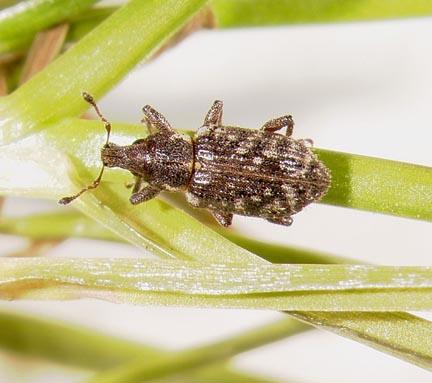 The annual bluegrass weevil is one of the most destructive pests on golf courses in the northeastern United States. Syngenta recently launched Ference, a new insecticide that gives golf course superintendents another tool in their battle with this troublesome and mobile pest.
The annual bluegrass weevil is one of the most destructive pests on golf courses in the northeastern United States. Syngenta recently launched Ference, a new insecticide that gives golf course superintendents another tool in their battle with this troublesome and mobile pest.With the active ingredient cyantraniliprole, Ference offers increased control of annual bluegrass weevil through Syngenta's ABW Optimum Control Strategy, detailed here.
Ference controls annual bluegrass weevil larvae inside the stem (first to second instar) and outside the stem (third to fifth instar). Because Ference controls all larval stages, it is especially well-suited to control the asynchronous summer populations. Ference is in the same class of chemistry found in Acelepryn insecticide and can stop damaging feeding of young larvae within minutes after ingestion of treated turf. It can be applied to all turfgrass areas on the golf course, including tee-box areas, roughs, fairways, greens and collars.
"The active ingredient in Ference provides a new, extremely effective management tool for superintendents dealing with ABW infestations, particularly when multiple generations, or asynchronous populations, are present," says Mike Agnew, Ph.D., technical manager, Syngenta Turf and Landscape. "As insect resistance to pyrethroids continues to grow, we have to integrate alternative chemistries into our pest control strategies."
Ference works in tandem with Acelepryn, Provaunt and Scimitar GC insecticides as part of the Syngenta Optimum Control Strategy that can be followed through WeevilTrak.com. Weevil Trak and the Optimum Control Strategy are supported by seven independent entomologists and 38 turfgrass consultants across the Northeast.
Once limited to southern New England, annual bluegrass weevil now is found on golf courses as far west as Ohio and as far south as North Carolina, as well as in Ontario and Quebec. Weather conditions determine when adult ABWs become active, and larvae from ABW reproduction develop at different times. Once active, ABW cycle through reproductive stages quickly, producing up to four generations in any given season. Historically, detecting, monitoring and tracking ABW development requires different techniques because of these life cycles and thus treatment options have varied as well.

